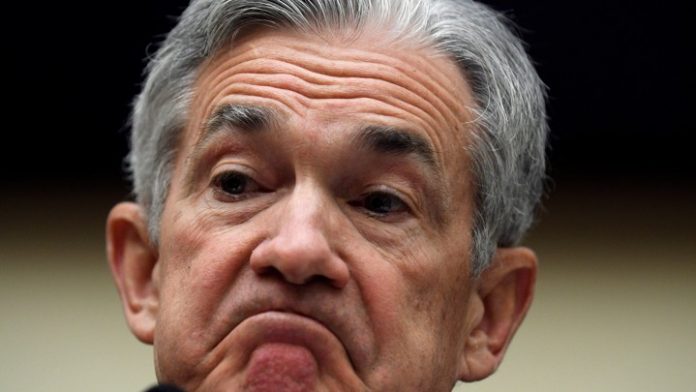Great news, bulls:
The great April/May selloff is over. The S&P’s 7-week skid seems to finally be done.
And it has nothing to do with earnings, economic projections, or even Wall Street analysts.
The market’s biggest and most important influence, the Federal Reserve, signaled that it will stop hiking rates in September.
This was revealed in yesterday’s May FOMC meeting minutes release, in which investors were surprised by a stunning admission in the “Staff Economic Outlook” section of the Fed’s notes.
“The staff’s projection for [Personal Consumption Expenditures] price inflation was revised up slightly in the second half of 2022 and in 2023 in response to the slow resolution of supply constraints seen over the first part of 2022, a higher projected path for import prices, and a judgment that wage increases would put more upward pressure on services prices than previously assumed,” the minutes read.
“Total [Personal Consumption Expenditures] inflation was expected to be 4.3 percent in 2022. [Personal Consumption Expenditures] price inflation was then expected to step down to 2.5 percent in 2023 and to 2.1 percent in 2024 as supply–demand imbalances in the economy were reduced by slowing aggregate demand and an anticipated easing of supply constraints.”
What the “word salad” above really means is that the Fed has revised its inflation forecast higher for 2022 but lower for 2023. That might not seem like a big deal, but it really is, and here’s why:
By reducing its inflation outlook for 2023, the Fed is implying that the next three 50 basis point (0.50%) rate hikes will signal the end of the current tightening cycle.
The reason being that the current federal funds rate is 1.00%. Three more 50 basis point (0.50%) hikes would bring it to 2.5%, right in line with the predicted “step down to 2.5 percent in 2023” that the Fed is anticipating.
That’s it. That’s why stocks rallied yesterday and continued climbing this morning. The Fed is forecasting an imminent recession that will cool inflation on its own, bringing the Personal Consumption Expenditures Index – the Fed’s favorite inflation gauge – down to 2.5% for 2023.
Is the Fed’s prediction going to be accurate? In my opinion, no, it won’t. The folks at the Fed assume that we can’t have both persistently high inflation and a recession at the same time.
After all, inflation is driven economically by demand outstripping supply.
But what about all the money that’s been printed over the last two years? Won’t that keep inflation lifted, even if demand subsides (as a result of a recession) through 2023?
Money manager and subprime housing crisis star Kyle Bass tackled that question in an interview this morning on CNBC.
“I think that we’re in a scenario where we have a stagflationary environment. I think the economy’s going to cool off, and I think we’ll have a recession by the end of this year or the beginning of next year,” Bass said.
“We’ll still have rising food prices and rising energy prices. Unfortunately, the Fed’s monetary policy just can’t change that.”
Bass skewered the Fed further, adding that while he believes the Fed’s “kneejerk reaction” to Covid-19 seemed “necessary” at the time, they’re now stuck with the issue of reducing a US monetary base that now has roughly “40% more money” than it did pre-Covid.
“Clearly printing 40% more money than was in circulation in the first place was a little too much,” he concluded.
And so, don’t be surprised to see stocks rally strongly from here. Bulls just got the signal from Fed Chairman Jerome Powell that there’s an end in sight to the hiking cycle. What’s more, rate cuts could be coming in 2023 to lift the US out of a recession.
That’s probably not the best plan moving forward, and I’d even argue that it’s setting up the US for an even bigger inflationary eruption down the road.
But for the time being, it doesn’t matter. The hikes are going to end much sooner than initially expected. And for bulls, that’s reason enough to celebrate.








